Victims Remembered at Arlington Cemetery
Courtesy of The Washington Post
Thursday, September 11, 2003
To their right stood 50 headstones for the victims of the terrorist attack two years ago. To their left loomed the west wall of the Pentagon, it’s limestone surface completely restored from the September 11, 2001, attack.
“In our minds’ eye, we can see the arsenel of democracy that it represents,” Secretary of Defense Donald Rumsfeld told a crowd of 400 gathered at Arlington National Cemetery for a wreath laying this morning. “The men and women who died were part of that arsenel.”
During a short and somber ceremony, Rumsfeld and Joint Chiefs of Staff Chairman Richard B. Myers emphasized the continuing war against terrorism that was effectively launched that day in September.
“In the memory of all those killed at the Pentagon two years ago, we will not merely endure, we will prevail,” Myers said. “For the last two years, we’ve been a nation at war. Terrorists are trying to defeat the United States and what it stands for: peace, freedom and tolerance and respect for the lives of others.”
Planes from nearby Reagan National Airport flew overhead, the roar of their engines cutting through the silence of the cemetery. As the audience joined in singing God Bless America, many family members of the attack’s victims were moved to tears.
“I think it’s going to be hard every year,” said Terri Johnson of Silver Spring whose sister, Brenda Gibson, died in the terrorist attack. “I didn’t think it was going to affect me as much as it did.”
Gibson, 59, of Fredericksburg, was working as a civilian accountant for the Army when the jetliner hit the Pentagon at 9:37 a.m. She was one of 125 people in the building who died, along with all 59 passengers and crew aboard the plane and the five hijackers.
“It’s still hard, it’s still sad. It’s something you never get over,” said another sister of Gibson’s, Sharon Graham. “We not only keep her alive in our minds and memories, we want the world to remember her, too.”
Later, Rumsfeld, Myers and other Defense officials were expected at a ceremony inside the Pentagon chapel to dedicate new stained glass windows made by some of the survivors of the attack.
Rumsfeld eulogizes September 11 victims at the Pentagon
COURTESY OF THE WASHINGTON TIMES
At 9:37 yesterday morning, more than 400 family members and friends stood in silence in Arlington National Cemetery to honor the memory of 184 persons killed when a terrorist-hijacked airliner crashed into the Pentagon at that exact time two years ago.
“We gather here today to honor the heroes that sleep in these hills,” Secretary of Defense Donald H. Rumsfeld said from a clearing atop a slope in the 624-acre cemetery, where 285,000 are interred. The Pentagon, where they died, could be barely seen through the trees behind his right shoulder.
Mr. Rumsfeld was especially speaking about 64 military and civilian personnel who died at the Pentagon and are buried at Arlington. The remaining 120 victims were buried are various sites throughout the country.
“They were heroes because they lived lives of duty and service to their country,” said Gen. Richard B. Myers, chairman of the Joint Chiefs of Staff. “They are all heroes because they lived their lives as free Americans.”
Minutes later, the two leaders walked to one side of the families and friends to lay a wreath on a granite marker bearing five plaques engraved with 184 names.
The remains of 50 of the 64 victims buried at Arlington are grouped under rows of nearby tombstones. Eight others are in the columbarium — a wall containing remains — and four are in graves throughout the cemetery.
Except for the disaster, yesterday was reminiscent of September 11, 2001. The sun was shining brightly. The temperature was a balmy 70 degrees. Family members and friends wore sunglasses or shaded their eyes with the “Patriot Day Observance” programs.
Mr. Rumsfeld reminded the audience that the attacks two years ago on the Pentagon and World Trade Towers in New York City, and the plane crash into a field in Shanksville, Pa., killed more than 3,000 people and sparked the war on terrorism.
“We know if we don’t fight the terrorists over there, in Iraq, in Afghanistan, we will have to fight them over here,” Mr. Rumsfeld said.
“Freedom is the birthright of every American,” he said, adding that the war on terrorism will shine the “light of liberty” on people living under the reign of dictators.
“This war on terrorism will be a long, hard struggle,” said Gen. Myers.
The general pointed out that some American Airlines employees were in the audience and extended a welcome to them. They were friends of the Flight 77 crew that was killed when terrorists smashed their plane into the Pentagon two years ago.
Navy Chaplain Robert Beltram prayed that the fight against terrorists might “unite the people of the world for peace.”
Cmdr. Beltram said, “Even the most eloquent words are inadequate to express the feelings and thoughts on this occasion. They are all heroes … because they lived their lives as free Americans.”
The U.S. Marine Band played smooth, slow tunes, including hymns, at the start of the program. Military members saluted and the audience stood with hands over their hearts as the “The Star-Spangled Banner” was played.
Concluding the half-hour Patriot Day memorial, the band played “Faith of Our Fathers” then accompanied Army Sgt. Bob McDonald in the singing of “America the Beautiful.”
The audience, which included at least one infant and a dozen preschool youngsters, was solemnly quiet throughout. There was no applauding. Friends greeted each other with smiles, hugs and fervent handshakes.
Occasionally, but not during the most solemn moments, airliners droned overhead after takeoffs from Ronald Reagan Washington National Airport.
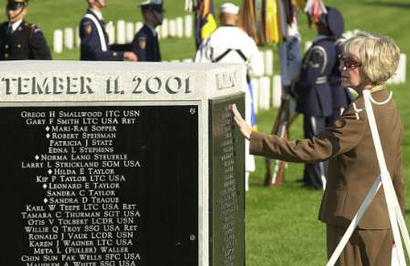
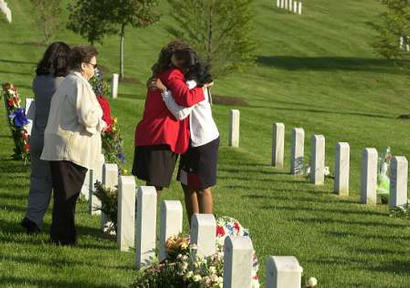
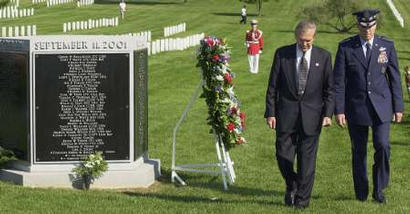
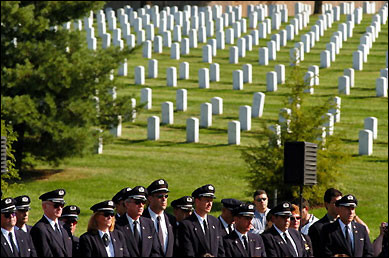
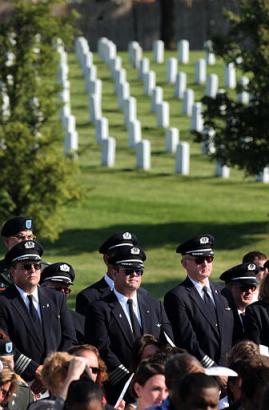
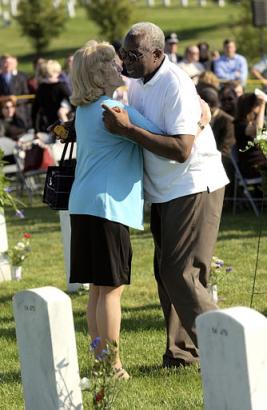
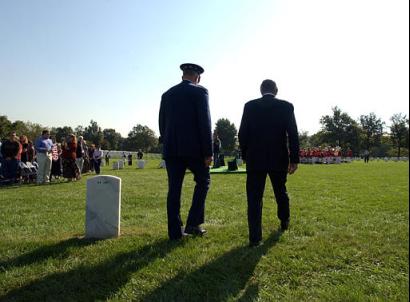
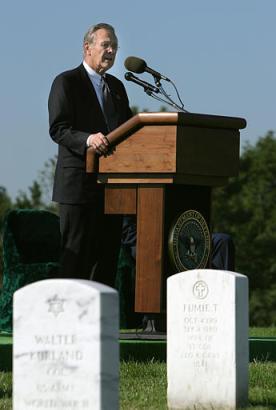
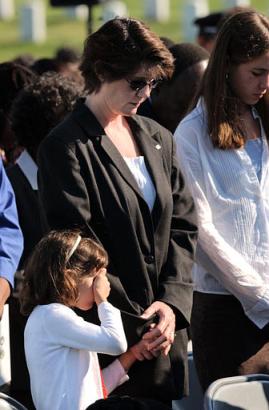
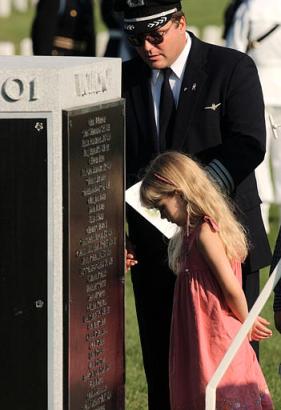
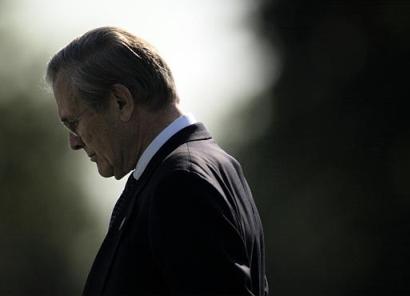
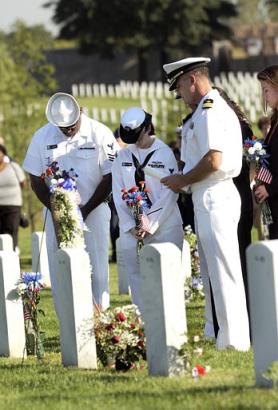
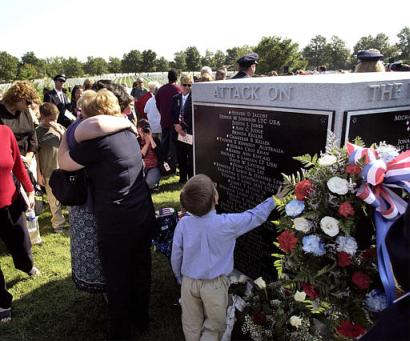
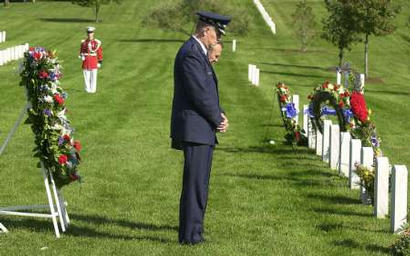
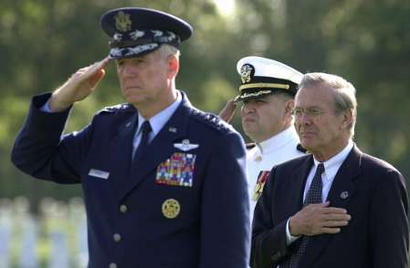
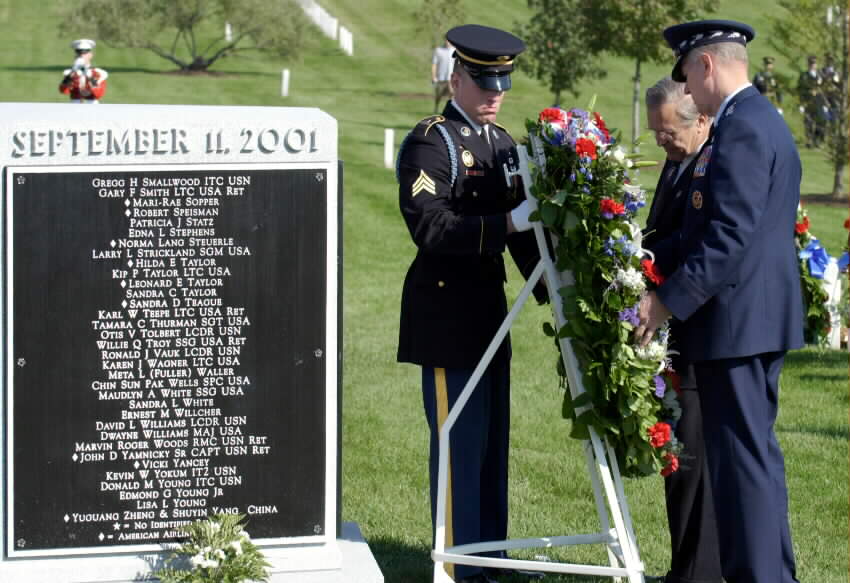
Michael Robert Patterson was born in Arlington and is the son of a former officer of the US Army. So it was no wonder that sooner or later his interests drew him to American history and especially to American military history. Many of his articles can be found on renowned portals like the New York Times, Washingtonpost or Wikipedia.
Reviewed by: Michael Howard
